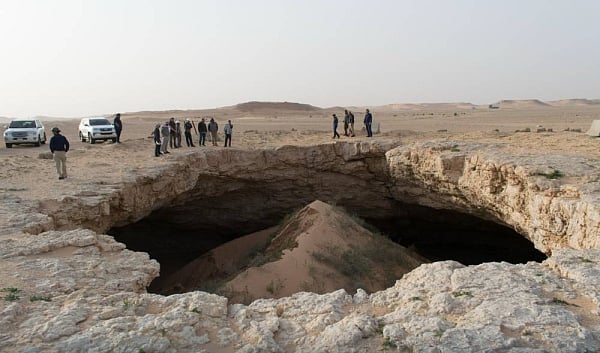Revealed: 8 million years of Arabian climate history hidden in Saudi caves
Ancient humid periods made Arabia a lush pathway for animals and early humans

Dubai: In a groundbreaking discovery, Saudi scientists have unveiled a rich and complex climate history of the Arabian Peninsula, stretching back eight million years.
Spearheaded by the Saudi Heritage Commission as part of the Kingdom’s Green Initiative, the research reveals multiple ancient humid periods that turned parts of Arabia — now among the driest regions on Earth — into lush, green landscapes teeming with life.
At the centre of the study is one of the longest and most precisely dated cave records ever recovered from central Arabia. Researchers analyeed 22 speleothems — mineral formations that develop in caves — from seven systems in the Duhool Al Samman area, northeast of Riyadh. Some of these formations date back as far as 7.44 million years.
These natural archives offer direct evidence of periodic episodes of increased rainfall and vegetation during the late Miocene, early Pliocene, and middle Pleistocene epochs. During these windows of climatic change, central Arabia supported rivers, lakes, and thriving ecosystems.
Fossil evidence confirms the presence of water-dependent species like crocodiles, hippopotamuses, and elephants — now long gone from the region.
The humid periods also created vital ecological corridors for early humans and animals migrating between Africa and Eurasia. This positions the Arabian Peninsula as a critical crossroads in the story of human evolution and biogeographic exchange. Fossil finds from the Baynunah Formation and the Nefud Desert further support this theory.
Yet the research also traces a gradual shift toward long-term aridity. Over time, these wet phases became shorter and less intense, coinciding with major global changes such as Northern Hemisphere glaciation and a weakening of the monsoon system. After the mid-Pleistocene transition, around 700,000 years ago, rainfall became increasingly scarce and erratic— unable to sustain the vibrant ecosystems of earlier epochs.
One of the most striking discoveries is a shift in the source of rainfall. Isotopic analysis of ancient water trapped within the speleothems shows a decline in moisture from southern monsoons, gradually replaced by winter rainfall systems from the north. This reflects broader shifts in global atmospheric circulation and adds a new layer to our understanding of Arabia’s environmental evolution.
This remarkable study not only rewrites the climatic history of the Arabian Peninsula but also underscores its importance in understanding ancient weather systems, biodiversity, and human migration routes. It highlights Arabia’s role not just as a desert expanse, but as a dynamic landscape shaped by powerful climatic forces over millions of years.
Sign up for the Daily Briefing
Get the latest news and updates straight to your inbox
Network Links
GN StoreDownload our app
© Al Nisr Publishing LLC 2025. All rights reserved.